Tigranocerta
Q720134Tigranocerta (Greek: Τιγρανόκερτα): fortress and town in the northeast of Armenia. (To distinguish the site from the more famous Tigranocerta on the bank of the Nymphius, it is also called Tigranokert in Artsakh.)
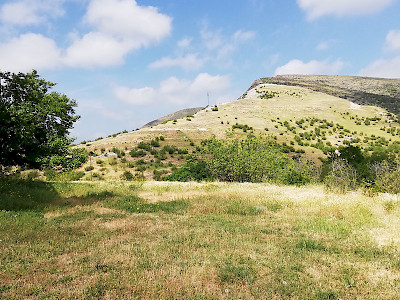
The remains of Tigranocerta, some thirty kilometers north of Stepanakert in Nagorno Karabach, were already known for quite some time, but excavation has started comparatively late, in 2006. One of the first questions to answer was when the settlement had been founded. It is named after a Tigranes, but which of the three Armenian kings with that name built this town? The coins proved that it was Tigranes II the Great, which means that Tigranocerta was founded between c.95 and c.55 BCE.
The triangular citadel was on a hilltop in the northwestern part of the city, from which it was separated by an 80 meter long wall. The archaeologists also identified a wall with a length of almost half a kilometer that connected the citadel with the gridiron-shaped residential quarters in the southeast; the hill itself consisted of terraces, separated by terrace walls. The citadel was in use until the second or third century CE.
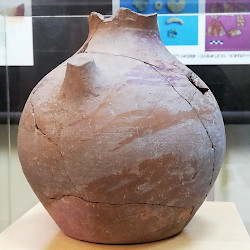 Tigranocerta, Painted Pottery |
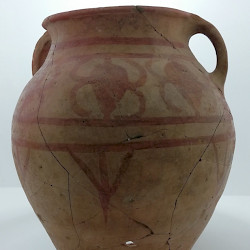 Tigranocerta, Painted Pottery |
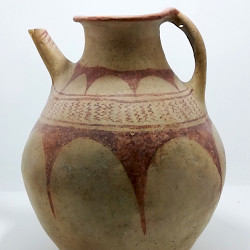 Tigranocerta, Painted Pottery |
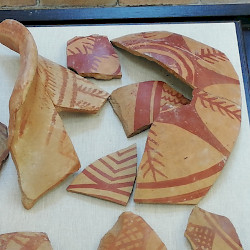 Tigranocerta, Sherds of Painted Pottery |
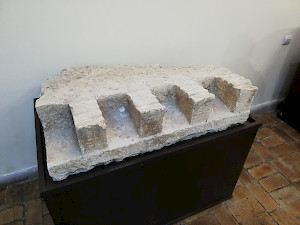
The excavators also found a part of the city’s southern defenses. They were remarkably wide, indicating that there was room for flocks. This fits the landscape, which is suited for cattle breeding and nomadism. All walls were constructed from local, white limestone, which made the city visible from afar. A cemetery and a wine press have been identified as well, while there was also a sanctuary in a cave near the settlement.
Two Christian buildings have been identified as well. One of these was a one-aisle basilica, perhaps dating back to the fourth century CE, but more likely a bit younger. It is interesting that there was a choir section, which is unusual in Armenia. One of the finds was a clay disk from the sixth or seventh century with the portrait of a man with a mustache, a fur hat, and a text “I am Vache, the Lord’s servant”. Next to this first church was another building, perhaps a baptistery or another church.
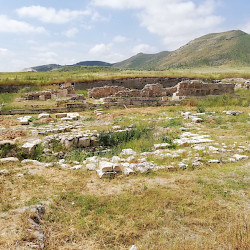 Tigranocerta, Churches |
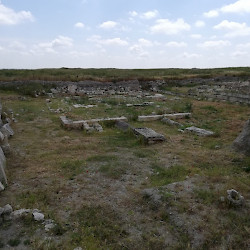 Tigranocerta, Baptistery |
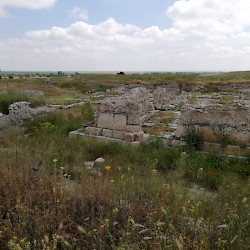 Tigranocerta, Southern Church |
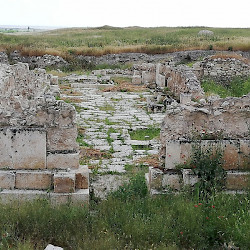 Tigranocerta, Southern Church |
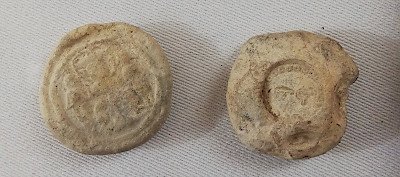
In Late Antiquity, the citadel appears to have been used by a Sasanian garrison, which left typical seal stamps (“bullae”). Later, the town was in Armenian hands again.
Both Christian buildings were abandoned in the tenth century, suggesting that the inhabitants had converted to Islam. The buildings were reused as living quarters. The settlement itself was abandoned in the fourteenth century and reoccupied in the eighteenth century, when a small castle was built by the Persians, who wanted to defend the region against the Russians. This castle now used as a museum.
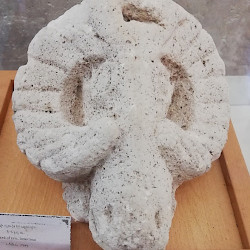 Tigranocerta, Ram's Head |
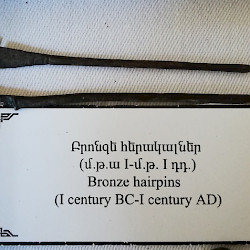 Tigranocerta, Hairpins |
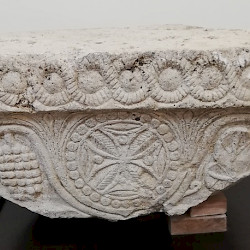 Tigranocerta, Church Capital |
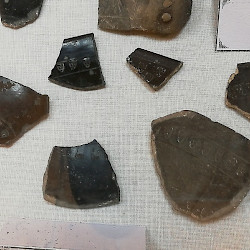 Tigranocerta, Sherds of Black Pottery |